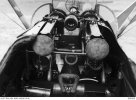dinomartino1
Well-Known Member
Harry Cobby in a Sopwith Camel in Britain when he was posted there as a flight instructor 1918-1919
He organised the high-visibility check paint pattern himself, "not for conceit, but for safety".
.Cobby noted that this was "the best Camel he could find" and he flew it regularly during his posting to Number 8 Squadron (training) at Leighterton.
Group portrait of a group of officers of A Flight, No. 4 Squadron of the Australian Flying Corps (AFC), at their aerodrome near Clairmarais. Back row, left to right: Lieutenant (Lt) W. A. Armstrong; Lt A. T. Heller; Lt A. H. Lockley; Lt J. S. M. Browne. Front row: Lt R. F. McRae; Lt [Elwyn] Roy King DFC; Captain A. H. Cobby DSO DFC; Lt R. G. Smallwood; Lt C. R. Burton.
Portrait of Captain Arthur Henry Cobby DSO DFC standing in front of Avro 504k
The top air ace of the AFC , Australian Flying Corps and a national hero was Arthur Henry (Harry) Cobby (1894-1955) from Victoria who achieved 29 air to air victories (19 scout fighters, 5 two seaters and 5 observation balloons that were generally well defended – a speciality of his in particular, Harry Cobby helped develop tactics to take these balloons down). This was quite an achievement as he only saw active combat service for less than a year and achieved all these victories within six months between March 21st and September 4th, 1918.
Cobby enlisted in 1916 and embarked for Europe in 1917 where he served with No. 4 Squadron flying the Sopwith Camel. He seems to have been quite a character fitting his aircraft with aluminium cutouts of Charlie Chaplin.
Cobby soon encountered the enemy including expert pilots from Manfred Von Richthofens “Flying Circus“, 2 of which he claimed as his first victories on March 21st, 1918 (Albatros D.V scout planes). He shot down 2 or more aircraft in a day on at least 5 occasions. By 1918 he was promoted to Captain and was awarded the Distinguished Service Order (DSO), Distinguished Flying Cross (DFC) and bars for bravery. In September 1918 Cobby was reposted to England as a flight instructor, before returning to Australia in 1919.
Cobby was one of the original officers when the RAAF was formed in 1921 and eventually he reached the rank of Air Commodore in the RAAF where he continued to serve until 1946 and then in the Civil Aviation Department until his sudden death in 1955. During his career in World War Two he was the Air Commander of the Australian 1st Tactical Air Force, the main strike force of the RAAF fighting Imperial Japanese forces in the Pacific theatre.




